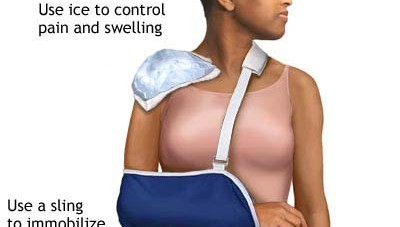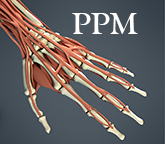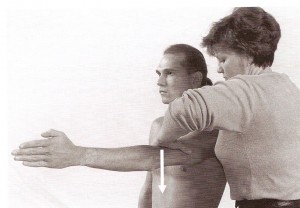College and Career Motivation Week

November 20, 2013 | Posted in Uncategorized | By drsmespinoza
Comments Off on College and Career Motivation Week
For College and Career Motivation Week
****Make sure to stay on task from bell to bell for 100% on your daily participation grade****
GA college 411
Sophomores and Juniors –
1. Create an account
2. Click on “Discover Your Career Interest,” and then complete the 6 interest surveys.
3. Click on the tab for “Your Portfolio,” and then click on “Your Profile,” and fill in as much information as you can in the basics, looking ahead, and experience and activities.
4. Start your scholarship search.
Exit Ticket: Create a list of what you were able to accomplish on GA college 411
Seniors –
1. Log into your account.
2. Go to the “Your Portfolio,” tab and fill in all of the information in the section for “the Basics.”
3. Click on the Financial Planning Tab and then click on Find Scholarships.
4. Start a new search or update your search if you have already completed one. The more complete your information is the more relevant your search results will be. Fill out as many online scholarship applications as you can find that you qualify for.
Exit Ticket: Turn in a list of the scholarship applications that you completed.
Review
November 14, 2013 | Posted in Uncategorized | By drsmespinoza
Comments Off on Review
Review
Review tasks for the day:
1.Finish your Shoulder fold-able (if you have not already). Finish your shoulder injury organizer, if you have not already.
2. Review the terms on Quizlet by playing the scatter game, at least 5 times. Compete for the fastest time! http://quizlet.com/30497950/shoulder-for-135-week-flash-cards/
3. Complete the online quiz on Quia http://www.quia.com/quiz/4481062.html
4. Extra credit – Type written – Research one shoulder injury and write an informational essay describing the injury or condition, the possible causes and treatment. Be thorough. Site your resources.
Shoulder Injuries

November 8, 2013 | Posted in Uncategorized | By drsmespinoza
Comments Off on Shoulder Injuries
Assignment
*Description of the Condition
*How it usually happens/ Who it usually happens to
*Treatment/Prognosis (Will it heal / How likely is it to heal)
for the following common shoulder injuries:
- Impingement
- Osteoarthritis
- Instability / Dislocation
- Clavicle Fracture
- Frozen Shoulder Syndrome
- Avascular Necrosis
- Thoracic Outlet Syndrome
- Bursitis
- Rotator Cuff Tear
Manual Muscle Tests (MMT)

November 6, 2013 | Posted in Uncategorized | By drsmespinoza
Comments Off on Manual Muscle Tests (MMT)
A Manual Muscle Test (MMT) is a way to test the function of a muscle. If a muscle is not functioning as it should, it could be due to injury or disease of the muscle, joint, associated bone or bones, or it could be due to a problem with the nervous or blood supply to the muscle.
Copy the following notes into your notebook:
When testing keep in mind the following:
1. You always test bilaterally (both sides)
2. You are testing to make sure that their muscle can lock the joint into place and can offer resistance, appropriate to the size and age of the patient (or one being tested).
3. You are NOT testing to see if you are stronger than your patient or if you can overpower them.
4. You are not testing them on how well they follow instructions or how well they understand you.
Instructions:
1. Show the patient the position you want them to hold.
2.Tell them that you are going to try to push their (arm, hand etc.) and that they should NOT let you
3. Instruct them to hold
4. Apply pressure/resistance (gradually)
Copy this chart into your notebook. We will be using the Numerals chart, in most cases.
|
Numerals
|
Letters
|
Description
|
| Against gravity test | The patient is able to move through: | |
|
5
|
N (normal)
|
The full available ROM against gravity and against maximal resistance, with hold at the end of the ROM (Hold for about 3 seconds). |
|
4
|
G (good)
|
The full available ROM against gravity and against moderate leading resistance. |
|
4-
|
G-
|
Greater than one half of the available ROM against gravity and against moderate resistance. |
|
3+
|
F+
|
Less than one half of the available ROM against gravity and against moderate resistance. |
|
3
|
F
|
The full available ROM against gravity. |
|
3-
|
F-
|
Greater than one half of the available ROM against gravity. |
|
2+
|
P+
|
Less than one half of the available ROM against gravity. |
| Gravity eliminated test: | The patient is able to actively move through: | |
|
2
|
P
|
The full available ROM gravity eliminated. |
|
2-
|
P-
|
Greater than one half the available ROM; gravity eliminated. |
|
1+
|
T+
|
Less than one half of the available ROM; gravity eliminated. |
|
1
|
T (trace)
|
None of the available ROM; gravity eliminated and there is palpable or observable flicker contraction. |
|
0
|
0 (zero)
|
None of the available ROM; gravity eliminated and there is no palpable or observable muscle contraction. |

